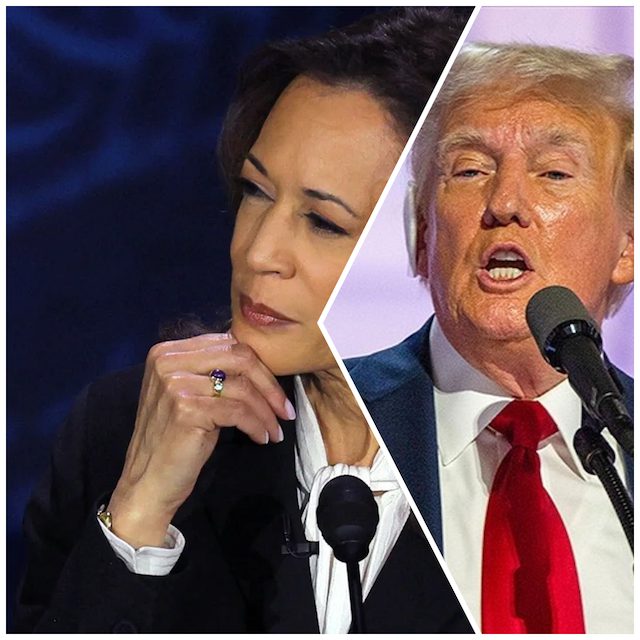In a historic yet somewhat predictable result, former President Donald Trump has once again secured victory in the recent U.S. presidential election, decisively winning key swing states. His opponent, Kamala Harris, garnered 226 electoral votes, while Trump reached 295, comfortably surpassing the 270-vote threshold required to win. With this victory, Trump becomes only the second Republican in the past two decades to serve a second term, following George W. Bush, who held office from 2001 to 2009.
This outcome brings to light an enduring question: Can the United States, celebrated as the world’s oldest democracy and a champion of equality, elect a woman as president? Despite significant strides by American women in politics—many of whom now hold powerful positions—the presidency remains elusive. The recent election, in which Vice President Kamala Harris fell short of becoming the first woman to hold the office, underscores the persistent challenges that women face in reaching the nation’s highest political position.
Globally, female leadership has become increasingly common. Countries across diverse cultural and political landscapes have embraced women as heads of state, even within traditionally conservative societies. The United Kingdom, India, and Israel set early examples of female leadership with figures like Margaret Thatcher, Indira Gandhi, and Golda Meir. More recently, nations such as New Zealand, Germany, Finland, and Iceland have been led by women like Jacinda Ardern, Angela Merkel, and Sanna Marin. According to the Inter-Parliamentary Union, as of 2023, women held the highest executive office in 32 countries, including Bangladesh and Pakistan—nations that have each seen multiple female leaders.
In contrast, India—the world’s largest democracy—has demonstrated significant openness to female leadership. Indira Gandhi’s tenure as prime minister remains a defining example, and the recent passing of the Women’s Reservation Bill, which reserves seats for women in all political elections, marks a major achievement for gender equality. Female leaders such as Sonia Gandhi, head of the United Progressive Alliance, and numerous female chief ministers and governors reflect India’s acceptance of women in prominent political roles. Such developments could serve as a model for American voters.
However, despite these global advancements, U.S. election results reveal that structural and societal barriers persist for women aspiring to the presidency. While women currently hold around 28% of seats in the U.S. Congress and a record 25 governorships, the Oval Office remains out of reach. Studies indicate that implicit biases continue to shape public perceptions of women in leadership. For example, a study by the Barbara Lee Family Foundation found that many voters perceive male leaders as more capable of handling national security and economic issues—traits often associated with the presidency.
American voters are increasingly supportive of women in Congress and state governments, but the presidency remains, for many, a role steeped in traditional male associations. Yet, there are signs of change. Kamala Harris’ election as vice president marked a historic breakthrough as the first woman, as well as the first Black and South Asian person, to hold this office—a milestone reflecting a gradual shift in American views on leadership. Other trailblazers, such as Hillary Clinton and Elizabeth Warren, have demonstrated that women can run competitive presidential campaigns, suggesting growing acceptance of female leadership at the highest levels.
Recent polling data provides insight into this evolving landscape. According to a 2021 Pew Research Center survey, 61% of Americans believe men and women make equally effective leaders. However, only 42% feel the country is “ready” for a female president. A 2022 Gallup poll found that, in theory, 94% of Americans would vote for a qualified female candidate, yet this theoretical support has not translated into an electoral victory for a woman in the presidential race.
The election of a female U.S. president remains an unachieved milestone, suggesting that while the nation has progressed toward gender equality, deep-rooted structural and cultural biases remain. Nevertheless, change is likely on the horizon. As more women gain leadership experience and societal attitudes continue to evolve, the path to the presidency for women may finally open. Figures like Vice President Kamala Harris serve as both inspiration and evidence that a woman president is not only possible but increasingly probable.

Arvind Sharma is an award winning bi-lingual journalist with more than 20 years of experience.
He has worked with Divya Himachal, Dainik Jagran, Dainik Bhasker, Vir Partap, Ajit and PTI.
In 2010, he was conferred the Himachal Kesri journalism award. He reports on the Tibetan Government in Exile, politics, sports, tourism and other topics. He lives in Dharamshala.




